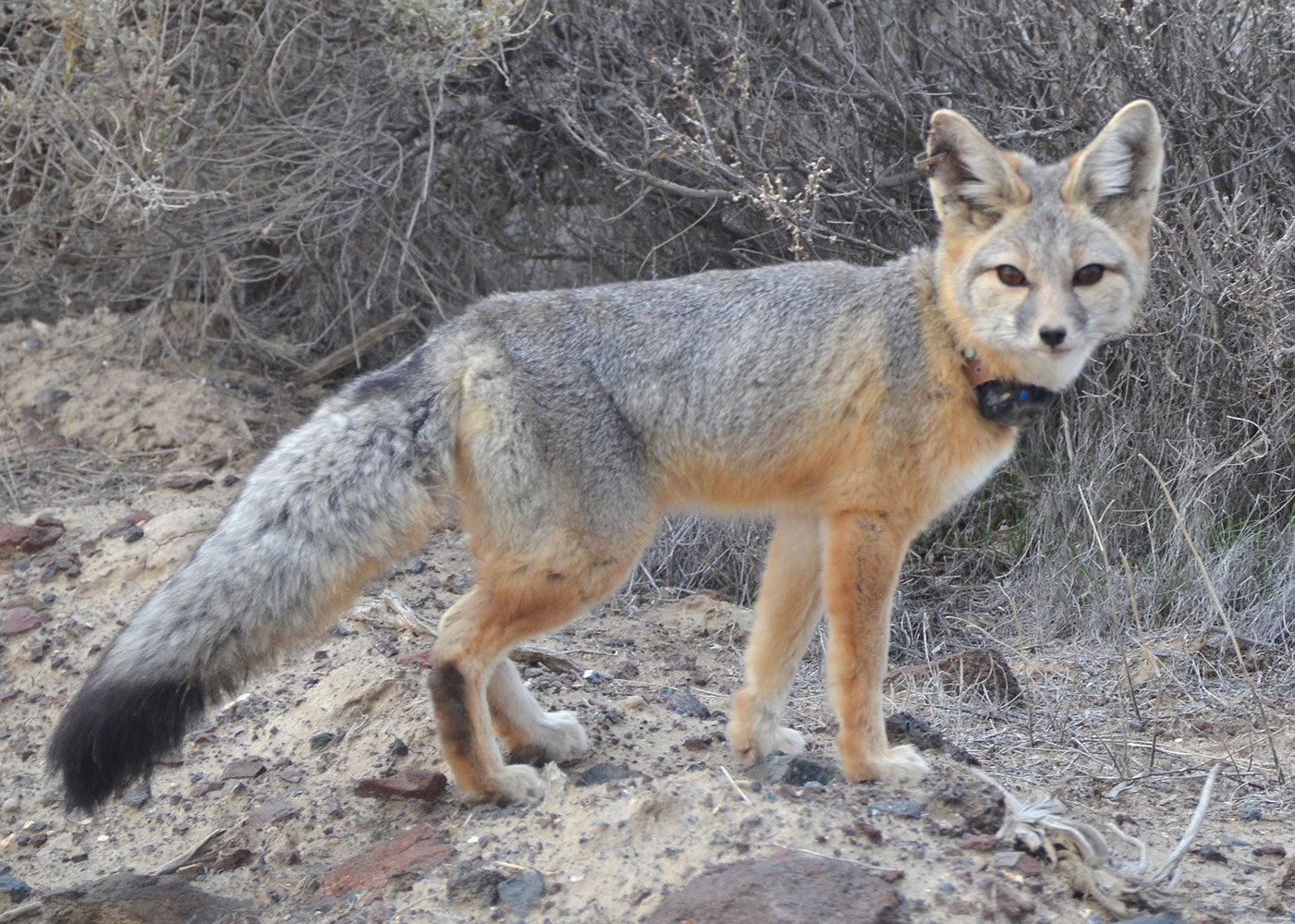ODFW’s kit fox video
MEDFORD, Ore. — A rare kit fox sporting GPS bling recently led wildlife biologists to the little-critter mother lode they’ve sought for four years while crawling through the sagebrush of Eastern Oregon’s unforgiving Coyote Lake Basin.
They tracked the collared fox to its den, then set up remote cameras that beamed clear video images to their desktop computers of this rare Oregon desert dweller. The footage is helping biologists monitor kit fox distribution and habitat use in areas where they may be threatened by man’s encroaching footprint.
And while the videos are scientifically valuable, they’re also pretty cool to watch at work when the boss isn’t looking.
“Yeah, it is cool,” says Michelle Dennehy, the Oregon Department of Fish and Wildlife’s Wildlife Division spokeswoman.
“When we saw the footage, we realized how rare it was,” Dennehy says. “Plus, they’re cute. Who doesn’t want to see cute kit fox pups?”
Whether from the desktop or the smartphone, outdoor enthusiasts now have more opportunities than ever to watch wildlife filmed for scientific purposes but posted for public consumption. Fish and Wildlife’s YouTube site is awash with videos presented as interesting outtakes from ongoing studies and surveys that in the pre-Facebook age were rarely seen outside government cubicles.
In one of the videos, a fox climbs a tree to chow on bear bait set out as part of Fish and Wildlife’s annual black-bear survey.
In another, a black bear scratches that itch on his back by rubbing up against a tree near Gold Beach.
And a crowd favorite for its choreography alone features a chance encounter at night between a skunk and a gray fox that is worthy of a “Dancing with the Critter Stars” pilot.
Last month, an infrared video survey of Eastern Oregon sage grouse leks, some of which hadn’t been counted since World War II, led to two bizarre-looking videos.
This week’s box-office hit is the video of the kit fox pups.
While the videos certainly have crowd appeal, there is more here than meets the cute meter.
The kit fox video is part of an overall effort to gauge the animal’s depth and breadth in southeast Oregon, which is the northern fringe of its range. In addition, its home is in a desert area where there is growing interest in wind energy and mining, as well as more use by off-highway vehicle riders.
The agency is charged with weighing in on the potential impacts to wildlife when projects are proposed, but the kit fox hadn’t been studied by the agency since the 1990s, a veritable technological wasteland compared to today.
The current kit fox project started in 2012 with survey cameras in southern Malheur County, then spread to Harney and Lake counties. But the break came in the past year when GPS collars — the same technology used to track wolf OR-7 on his viral journey that eventually led to photographs of his mate and pups in remote Jackson County — became small and affordable enough to electronically accessorize a 4-pound fox.
So far, agency biologists have trapped and collared eight kit foxes, leading to the discovery of two active dens. Their daily movements are tracked much like OR-7 was, and cameras are set around dens when they are discovered.
That not only allows biologists to track these animals from their offices, it brings the wilds of Oregon to the computers and smartphones of critter-curious Oregonians.
“Those foxes are in a very remote area, so the trail cameras really help us see what’s difficult to see in the field,” Dennehy says.



